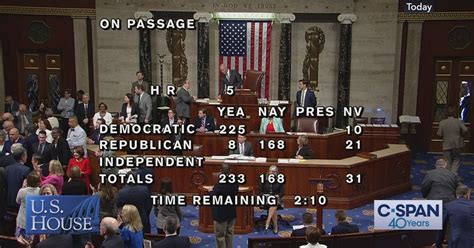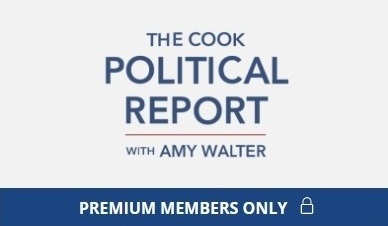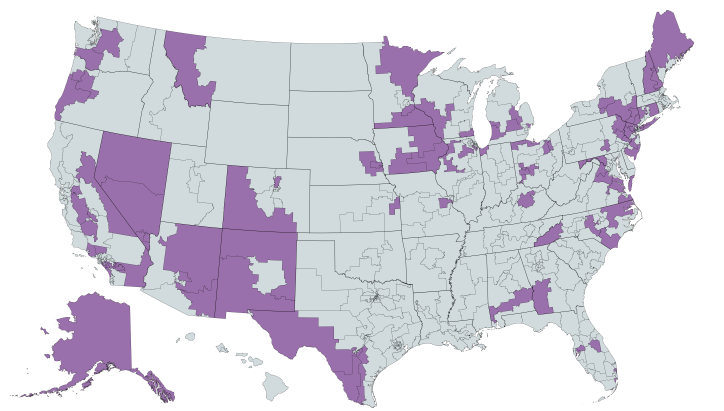| 6/29/2025: How Conservative is Your House Rep? A Comparison of CPAC Ratings and RightDataUSA.com Ratings [RightDataUSA] | |||||||||||||||||||||||||||||||||||||||||||||||||||||||||||||||||||||||||||||||||||||||||||||||||||||||||||||||||||||||||||||||||||||||||||||||||||||||||||||||||||||||||||||||||||||||||||||||||||||||||||||||||||||||||||||||||||||||||||||||||||||||||||||||||||||||||||||||||||||||||||||||||||||||||||||||||||||||||||||||||||||||||||||||||||||||||||||||||||||||||||||||||||||||||||||||||||||||||||||||||||||||||||||||||||||||||||||||||||||||||||||||||||||||||||||||||||||||||||||||||||||||||||||||||||||||||||||||||||||||||||||||||||||||||||||||||||||||||||||||||||||||||||||||||||||||||||||||||||||||||||||||||||||||||||||||||||||||||||||||||||||||||||||||||||||||||||||||||||||||||||||||||||||||||||||||||||||||||||||||||||||||||||||||||||||||||||||||||||||||||||||||||||||||||||||||||||||||||||||||||||||||||||||||||||||||||||||||||||||||||||||||||||||||||||||||||||||||||||||||||||||||||||||||||||||||||||||||||||||||||||||||||||||||||||||||||||||||||||||||||||||||||||||||||||||||||||||||||||||||

Photo credit: CPAC.org
There is more to a congressman than his voting record -- there is his role in sponsoring or facilitating legislation; his role in various committees and subcommittees; providing services for his constituents, and other duties. Only the voting record provides a significant amount of quantifiable data about where he stands on the important issues of the day. Congress takes numerous votes over the course of a year. Many votes are not even officially tabulated -- these are "voice votes" -- but others ("roll-call votes") require an explicit enumeration of the Yeas and Nays.

Photo credit: c-span.org
At RightDataUSA.com, we have a complete record of CPAC/ACU key votes and their results going all the way back to 1970, which is when the ACU began issuing ratings. We have also created our own ratings, based on likely ACU criteria, for the years 1961-1969 for those who are interested in ancient history.
While updating the pages of all 2024 House members to reflect the recently-released CPAC figures, we noticed that in many cases their ratings deviated from our own ratings by a substantial amount. The table below displays data for each congressman -- the CPAC rating, the RightDataUSA rating and the aggregate rating (a combination of CPAC ratings and ours). Right at the top of the chart is one good example of this divergence: Alaska representative Mary Peltola, a Democrat who was defeated for re-election last November, was assigned a 53% conservative rating by us for 2024 but only 22% by CPAC. Peltola, as a Democrat from a supposedly solid "red" state, was forced to masquerade as a moderate in order to have any chance of returning to the House for a second term; she came close but lost by 2.4%. How conservative was she, really? Note that even 22% is a very high conservative rating for a Democrat these days and 53% is stratospheric. In the event of a major difference between our rating and CPAC's rating, the truth typically lies somewhere in between. Peltola's aggregate rating was 40% for 2024.
For 2024: The average GOP representative received a rating of 79% from CPAC and 91% from RightDataUSA. The average Democrat representative received a rating of 2% from CPAC and 9% from RightDataUSA. The average House member received a rating of 41% from CPAC and 50% from RightDataUSA. Why are the two sets of 2024 House ratings so different in many instances? Our evaluations skew to the right as compared to those of CPAC. Of the 441 representatives who participated in House votes in 2024, we assigned a higher conservative rating than CPAC to 353 of them; we assigned a lower rating to only 51 (37 received identical ratings from both sources). Even though RightDataUSA and CPAC are approaching this subject from the same conservative perspective, there was surprisingly little agreement on what constituted a key vote in 2024. Between the 23 votes CPAC selected and the 39 we selected, there were only two which overlapped. Furthermore, there was a considerable differentiation in the type of key vote which was selected. Each key vote can be assigned to one of the following categories:
Many key votes could easily be assigned to multiple categories (e.g. practically every vote has some economic component to it), however we limited all votes to a single classification. As one example, all key votes dealing with border control and/or illegal immigration are classified as Social rather than Foreign because it is much more of a social issue than one of foreign policy; but illegal immigration, like so many other vote topics, has a compelling economic impact as well. CPAC's 23 key votes break down as:
Our 39 key votes were distributed as:
Once CPAC ratings are available for a particular year, we allow them to supersede our own ratings and therefore we display the CPAC data and remove ours (we may update the site to show both datasets shortly). Here is a listing of the 39 key House votes we selected for 2024:
Is there any doubt that these votes were on issues which should be of great importance to conservatives? Why did CPAC omit 37 of these 39 votes? Are economic issues -- which they strongly lean towards -- really that much more important than other issues? Was there a desire by CPAC to choose a set of votes which would yield ratings that match their subjective evaluations of certain representatives? Or are we at RightDataUSA overemphasizing social issues and neglecting economics? It should be apparent that the dual sets of votes were selected independently of each other -- during 2024 we had no idea which votes CPAC was considering and (unless they actually visit this site) they had no idea which votes we deemed to be critical. In 2025 the pattern is similar. There are no CPAC ratings to compare to yet, and there probably won't be any until well into 2026. However our 2025 ratings of House members bear a strong resemblance to the ones we generated during 2024, in the sense of being noticeably to the right of what some folks might consider to be accurate. So far in 2025 we have selected 20 House votes as being key ones. Republicans are for the most part so thoroughly united that nearly all of them score at about 90% -- and it would be closer to 100% if we reversed our position (which corresponds to CPAC's position) on the abominations known as Continuing Resolutions (CRs). These resolutions are a cowardly way for Congress to avoid passing an actual budget, thus allowing government spending, the burden on taxpayers and the national debt to continue to spiral out of control because -- so the politicians claim -- the only alternative is the dreaded Government Shutdown. All Republican politicians live in mortal fear of that, since the Democrat Propaganda Machine known as "the media" will ensure that blame is placed solely on one side of the aisle in the event of a so-called shutdown. CPAC always opposes CRs, and so do we. The pair of CRs among our key votes in 2025 are the only ones in which Republicans as a group get a failing grade because they voted in favor; opposition Democrats therefore get a passing grade for opposing CRs, however ludicrous it may be that a majority of Democrats are assigned to the "right" side on anything. If Republicans have majorities in the House and Senate (which they do) and if they are so united (which nearly all of them are) then why are those majorities not accomplishing more? Clearly it's because those majorities are so extremely narrow. The GOP has some ornery contrarians (like Rand Paul and Thomas Massie), grandstanding war-mongering pricks (like Lindsey Graham) and outright Democrats posing as Republicans (like Susan Collins and Lisa Murkowski). When only one or two votes are needed to thwart legislation, these people and others who occasionally behave like them rise to the occasion and become the liberal media's Queen For A Day. Other times, principled conservatives may refuse to be whipped into line on a particular piece of legislation because they will not concede that it is 15% good while being "only" 85% terrible, and the rebels may temporarily receive Strange New Respect from the media as a reward (a reward full of ulterior motives) for derailing something the media objects to. Summary: It's a good idea to be able to evaluate congressmen to determine whether their performance in Congress is in line with the voters of their districts. Several organizations attempt do that, although most such organizations are ones which obsess over a single issue; therefore their ratings appeal only to voters who share that same obsession. A few organizations, including RightDataUSA.com, evaluate members of Congress over a wider range of issues that is based on a larger sample of votes. However, even groups who are on the same side of the political aisle can disagree about the level of liberalism or conservatism that is expressed via a sample of a congressman's votes. Here we have presented our ratings alongside those from CPAC, and readers can decide for themselves which ones to accept. As we get closer to the 2026 midterms, these evaluations will take on greater significance and we will update our ratings as we did here in 2024. Urban Democrat congressmen must always guard their left flanks in primary elections lest a younger and more aggressive and hate-filled ultra-liberal challenge them. In other districts, Democrats are well aware that "moderation" (fraudulent though it is) is a sensible thing. In both types of districts, the degree to which incumbents are concerned with their re-election chances will be reflected in their votes. On the Republican side, the GOP establishment is never interested in having more aggressive conservatives in Congress, and will help squishy incumbents with financing and by creating "paper conservatives" when necessary, to flood the primary ballot and split the right-wing vote. Even with all that GOPe assistance, supposedly vulnerable left-wing Republican incumbents normally run to the left as elections approach, and that will be apparent in their vote ratings too. To make an educated choice, particularly in a primary election, smart voters will want to know everything they can about the person they are voting for -- or against. Tags: | |||||||||||||||||||||||||||||||||||||||||||||||||||||||||||||||||||||||||||||||||||||||||||||||||||||||||||||||||||||||||||||||||||||||||||||||||||||||||||||||||||||||||||||||||||||||||||||||||||||||||||||||||||||||||||||||||||||||||||||||||||||||||||||||||||||||||||||||||||||||||||||||||||||||||||||||||||||||||||||||||||||||||||||||||||||||||||||||||||||||||||||||||||||||||||||||||||||||||||||||||||||||||||||||||||||||||||||||||||||||||||||||||||||||||||||||||||||||||||||||||||||||||||||||||||||||||||||||||||||||||||||||||||||||||||||||||||||||||||||||||||||||||||||||||||||||||||||||||||||||||||||||||||||||||||||||||||||||||||||||||||||||||||||||||||||||||||||||||||||||||||||||||||||||||||||||||||||||||||||||||||||||||||||||||||||||||||||||||||||||||||||||||||||||||||||||||||||||||||||||||||||||||||||||||||||||||||||||||||||||||||||||||||||||||||||||||||||||||||||||||||||||||||||||||||||||||||||||||||||||||||||||||||||||||||||||||||||||||||||||||||||||||||||||||||||||||||||||||||||||
| 4/15/2025: U.S. House District Analysis -- What Are "PVIs"? [RightDataUSA] | |||||||||||||||||||||||||||||||||||||||||||||||||||||||||||||||||||||||||||||||||||||||||||||||||||||||||||||||||||||||||||||||||||||||||||||||||||||||||||||||||||||||||||||||||||||||||||||||||||||||||||||||||||||||||||||||||||||||||||||||||||||||||||||||||||||||||||||||||||||||||||||||||||||||||||||||||||||||||||||||||||||||||||||||||||||||||||||||||||||||||||||||||||||||||||||||||||||||||||||||||||||||||||||||||||||||||||||||||||||||||||||||||||||||||||||||||||||||||||||||||||||||||||||||||||||||||||||||||||||||||||||||||||||||||||||||||||||||||||||||||||||||||||||||||||||||||||||||||||||||||||||||||||||||||||||||||||||||||||||||||||||||||||||||||||||||||||||||||||||||||||||||||||||||||||||||||||||||||||||||||||||||||||||||||||||||||||||||||||||||||||||||||||||||||||||||||||||||||||||||||||||||||||||||||||||||||||||||||||||||||||||||||||||||||||||||||||||||||||||||||||||||||||||||||||||||||||||||||||||||||||||||||||||||||||||||||||||||||||||||||||||||||||||||||||||||||||||||||||||||

Not all House districts are created equally, in partisan terms. Some are designed to elect Democrats, some are designed to elect Republicans, and a comparatively small handful could go either way. When U.S. House elections roll around, as a couple of special ones did in Florida earlier this month, there is a desire to quantify districts so that people can anticipate the outcomes. Does Candidate A have any chance at all against Candidate B? How close should the race be? Could there plausibly be an upset?
On April 1, Republican Jimmy Patronis won the special election in FL-1 by a margin of 14.6%; Republican Randy Fine won the special election in FL-6 by 14.0%. [The left-wing article had the FL-6 number wrong; it should have been R+14 and not R+7. You'd think they would want to be especially accurate here, in order to make their party's "moral victory" not appear to be such a small one.] So what is all this "R+" stuff? It's nomenclature created by political analyst Charlie Cook, for the purpose of evaluating House districts; Cook claims to have published the first such data in the late 1990s. His evaluations, which are known as PVIs, are considered to be the gold standard for district ratings. When you see how they are created, you may find yourself wondering why they hold such a lofty status. From Cook's website: "The Cook Partisan Voter Index measures how partisan a district or a state is compared to the nation as a whole. A Cook PVI score of D+2, for example, means that district performed an average of two points more Democratic than the nation did as a whole, while an R+4 means the district performed four points more Republican." These ratings are not merely measures of past performance; they are also imbued with predictive value and are used to answer questions about future elections in House districts, questions such as the ones in the opening paragraph of this commentary. A slightly more detailed explanation of the calculation comes from Wikipedia: "The [PVI] looks at how every congressional district voted in the past two presidential elections combined and compares it to the national average. The Cook PVI is displayed as a letter, a plus sign, and a number, with the letter indicating the party that outperformed in the district and the number showing how many percentage points above the national average it received." We emphasized part of that last sentence because the vast majority of people who throw around PVIs are clueless about the actual meaning of the numbers, and misinterpret them entirely. This misinterpretation is not of tremendous import as long as the numbers are merely being compared to each other, which after all is their primary purpose. In the above example FL-1 is obviously a more Republican-leaning district than FL-6. Even those who are mathematically-challenged are capable of understanding that 22 is a larger number than 7 (or even 14), though they have no idea -- or the wrong idea -- of what the "22" means or how that number was calculated. 
Florida congressional district 1
Let us illustrate. Both Republicans on April 1st won easily in their respective Florida special elections, however given the lean of their districts they appear to have underachieved. This enabled the media and other Democrats to claim hollow "moral" victories in the wake of Democrat defeats, because the GOP candidates did not obliterate their liberal rivals by as much as they were supposed to.

Florida congressional district 6
Randy Fine won FL-6 (PVI of R+14) by exactly 14 points, which sounds like a precisely typical result there. But R+14 does not mean the Republican should win by 14%; it means the Republican should win by 28%. So yeah, another "moral defeat" (LOL) for the GOP. Once again, this outcome is not a harbinger of future performance. In November of 2026 the GOP will win that district every bit as easily as it usually does, and Democrats will not be pissing $10 million of billionaires' money down the drain as they did a few weeks ago, no matter how easily they can afford to do so.
The Cook Political Report (CPR) has lately decided to charge a fee for up-to-date district ratings, which is a shame (for those who actually fork over cash) because their ratings are based on very limited data, and that data contains an overwhelming bias in the logical sense as opposed to the partisan sense. Anyone who has the time, the ability, and the underlying data can calculate PVIs that are not only free of charge, but which are more accurate if based on a wider range of relevant data. The Cook Political Report's current bias can be summarized as "All Republican candidates are Donald Trump". Does that sound like a good assumption to make? Democrat campaign coordinators and their media allies surely agree with Cook, but sensible folks would dispute his assertion. The CPR looks at two -- just two -- points of data for every congressional district in the country, and then anoints the districts with their sacred ratings based on that meager amount of data. The two data points are these, currently:
Astute observers will notice that the one and only Republican in this sample is Donald J. Trump. Thus, Cook is determining district ratings based solely on how much that district voted for or against President Trump. Does an affinity or a hatred for Trump all by itself determine exactly how other Republican candidates -- the ones in U.S. House races -- will fare in their specific districts? What kind of idiot would assume that it does? Below we provide the RightDataUSA.com PVI ratings, without any fee, for every U.S. House district in the country. Our ratings are likely to be similar but hardly identical to the "official" Cook PVIs (we don't know and we aren't paying to find out), because our ratings are based not only on the last two presidential elections but also on many other recent statewide elections. In the table, the "2024 Result" is the percentage which the victorious House candidate received in the November, 2024 election. 
Map of 2026 battleground districts, created using mapchart.net
First, a note about the most competitive districts: Battleground districts are highlighted in the map above and in the table of all House districts which appears further down this page. It is unusual for a House member to win election in a district which tilts 6 points or more towards the opposite party although it does occasionally happen, so we define a "battleground" district as one in the range from D+5 through R+5. When upsets occur in House elections, they normally take place in these marginal districts, and therefore aren't truly "upsets".
In three cases above (CO-08, MI-07 and PA-07) the district is currently held by the "wrong" party -- the one which voters normally do not favor in statewide elections. You can bet that these three, plus other similar districts, are the ones which the national parties will have at the very top of their target lists in 2026. Those other similar districts are:
Based on the above lists, there is much more low-hanging fruit for Democrats to pick off in 2026 than there is for Republicans. Not to mention the two Republicans in already-marginal districts (Brian Steil, Derrick Van Orden) who are destined for extinction by the upcoming court-ordered Democrat gerrymander in Wisconsin. These are not the only districts which have a chance of flipping in 2026. In order to maintain control of the House, Republicans will need to hold on to a significant majority of their most vulnerable seats and perhaps achieve a small number of pickups of Democrat-held seats. They narrowly succeeded in 2024, but it will be more difficult in '26.
Update: Either we caught them on a good day or they've decided to drop the paywall for some reason, but the 2025 Cook PVI ratings are currently available even for non-subscribers! We still believe that more data means greater precision, but now readers can compare the two sets of ratings and decide for themselves. Tags:
PVI
Charlie Cook
U.S. House Ratings
More Data = More Accuracy
|